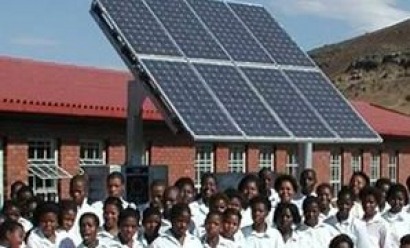
While often grid extension is not a feasible option, decentralised solutions are often the better alternative to alleviate energy poverty: they are cost-effective over the system’s lifetime, easy-to-deploy, install and maintain and their design can be tailored to demand needs. Plus, these regions offer abundant renewable energy resources.
Despite the solid arguments to support off-grid renewables as the best solution for remote areas, there is still one open question: What happens with the electricity service when the sun stops shining or the wind does not blow anymore? No doubt this is a relevant issue which probably is preventing local energy decision makers from including renewable energy sources in their rural electrification plans. Fortunately, present markets offer technologies that enable storing energy derived from a primary source for its use at a later time. Many of these solutions have reached maturity and therefore are being increasingly used to improve efficiency, reliability and price-competitiveness of electricity services as well as to achieve deeper penetration of renewable energy systems.
Energy storage technologies can be applied twofold: Firstly for off-grid systems installed in rural areas and secondly for decentralised grid backup in peri-urban areas that remain under-electrified.
To ease the path to these solutions, ARE has launched the six-month “Energy Storage Campaign”. This initiative aims to inform decision makers in Africa, Asia and Latin America about the added value that energy storage offers to rural areas.
It’s all happening!
The success of the campaign has been built upon the expertise of a group of rural electrification experts. These nine members of the Alliance based in three different continents and with a wide experience on the topic have formed the ARE Energy Storage Task Force with the objective of shaping this initiative and to find answers to ‘What really matters!’
As a result, the ARE Secretariat jointly with the Energy Storage Task Force has developed the position paper Using batteries to ensure clean, reliable and affordable universal electricity access1. This guide paper includes information and recommendations for decision makers, applications of the different types of battery technologies, as well as successful case studies from India, Bangladesh, Jordan, Peru and Mozambique. The position paper has a focus on electromechanical energy storage, in particular on four different families of batteries, as they remain the main technology applied to off-grid.
Energy storages represent a key element to ensure the proper functioning of any system and will contribute to the positive development of the entire industry:
- Short-term: The battery regulates the system by absorbing or supplying power to maintain a balance between instantaneous power production and consumption4.
- Long-term: Allows storing electricity at a period of peak production, thus avoiding wastage of energy at times when it is not required and supplying energy when intermittent primary energy resources are unavailable5.
Not without the public sector
Energy storage applied to rural electrification is attracting a lot of attention these days. However, these are still young markets which need more explanation and promotion. The support from public authorities, particularly regulators, as well as power sector technical bodies -such as rural electrification agencies and public utilities-would certainly help stimulate more investments in the market.To enhance developments,ARE has formulated the following recommendations for decision makers:
Learning from the past to improve the future
The kick-off of the “Energy Storage Campaign” was held at Intersolar Europe in June 2013, where ARE celebrated a successful workshop as official side event of the conference. Further promotion activities will include several webinars in collaboration with international organisations such as the United Nations Foundation Energy Access Practitioner Network, the creation of new papers on other storage technologies, as well as other workshops in international events, among others.
Thanks to the experience gained with the “Small Wind Campaign”, the expertise of the Energy Storage Task Force and the support of the industry, ARE expects to facilitate business dialogue between private and public sector on the advantages of energy storage.
This is not the first time ARE has launched such a campaign. Last year the focus was small wind power, and now it is the turn of energy storage, a technology that undoubtedly will make a difference in the long way towards achieving universal access to reliable and sustainable electricity in remote areas.
Footnotes:
1: ALLIANCE FOR RURAL ELECTRIFICATION (2013), “Using batteries to ensure clean, reliable and affordable universal electricity access”
2: Algeria, Angola, Cameroon, Congo, Equatorial Guinea, Gabon, Ghana, Kenya, Mauritius, Morocco, Mozambique, Niger, Nigeria, Senegal, South Africa, Tunisia, Uganda and Zambia
3: EUROBAT (2011), “Battery Economic Outlook: Industrial Battery Market Europe, Middle East and Africa (EMEA)”
4: IEA/OECD (2011), “Energy For All – Financing Access for the poor”, World Energy Outlook, p. 7
5: Ibid. p.7 and 15
About the Alliance for Rural Electrification and Marcus Wiemann
Marcus Wiemann is responsible for the policy sector and outreach for the Alliance for Rural Electrification (ARE). With a background in International Economics as well as in Political and Environmental Sciences, he works closely together with ARE partners and international organisations on numerous advocacy and policy actions. ARE has become a pioneering actor in the field of sustainable development, supporting and bringing together renewable energy companies who are passionate about rural electrification through decentralised renewable energy soltuions.
The Alliance for Rural Electrification is the international business association focusing on the promotion and development of off-grid renewable energy solutions in developing countries and emerging markets.
For additional information:

